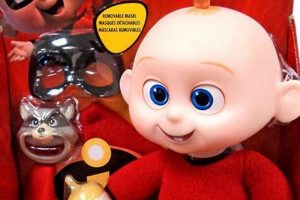The action of infants striking play objects against each other is a common developmental milestone. This behavior typically emerges as infants gain better motor control and an understanding of cause and effect. Observing this action provides insights into cognitive and physical development.
The emergence of this behavior is significant for several reasons. It aids in sensory exploration, allowing the child to experience different sounds and textures. Furthermore, it fosters an understanding of object permanence and the concept that actions can produce specific results. Historically, such actions have been recognized as a natural progression in a child’s learning and exploration of the environment.
The following sections will delve into the typical age range for this developmental stage, the underlying skills required, and potential variations in timing, as well as factors that may influence this behavior’s appearance.
Guidance Related to Toy-Banging Behaviors
The following points offer insights into understanding and supporting infant development concerning the interaction with objects through percussive means.
Tip 1: Acknowledge the Developmental Stage: The activity usually begins between six and twelve months. Recognizing this timeframe allows caregivers to provide appropriate objects and a safe environment.
Tip 2: Ensure a Safe Environment: The area should be free of hazards. Sharp objects or items that could break into small pieces are not suitable for infants exploring object interaction.
Tip 3: Provide a Variety of Textures and Sounds: Introduce objects made of different materials like wood, fabric, and plastic to stimulate sensory exploration during the act of striking toys together.
Tip 4: Observe and Respond to the Infant’s Cues: Pay attention to signs of frustration or disinterest. The infant’s engagement level will dictate the duration of the activity.
Tip 5: Encourage Bilateral Coordination: Presenting objects of differing sizes and weights can encourage the infant to use both hands in a coordinated manner during object-interaction.
Tip 6: Monitor for Delays: If the infant does not display object-interaction behaviors by twelve months, consult with a healthcare professional. Early intervention can address any potential developmental concerns.
These suggestions facilitate the development of motor skills, sensory awareness, and cognitive understanding. Caregivers play a vital role in providing a supportive and safe environment for infants to explore and learn through this natural behavior.
This section provides a foundation for informed interaction with infants as they explore their world through object manipulation. The subsequent conclusion will further summarize key concepts and offer additional resources.
1. Motor Skill Development
The progression of motor skills is intrinsically linked to the emergence of object manipulation behaviors in infants, including striking toys together. These skills are fundamental prerequisites and enablers of this developmental milestone.
- Gross Motor Control:
Adequate gross motor control, specifically the ability to sit upright independently, provides the stability necessary for an infant to engage in focused object manipulation. Without sufficient trunk control, maintaining balance while reaching for and striking objects would prove challenging. This control typically develops prior to or concurrently with the emergence of the behavior of interest.
- Fine Motor Skills:
The refinement of fine motor skills, including grasping and hand-eye coordination, is crucial for successfully manipulating objects. The infant must possess the dexterity to grip toys securely and coordinate hand movements to bring them together. The pincer grasp, the ability to hold objects between the thumb and forefinger, enhances the precision of object manipulation.
- Bilateral Coordination:
The act of striking toys together requires the coordinated use of both hands. Bilateral coordination, the ability to use both sides of the body together in a controlled and purposeful manner, is essential for bringing two objects together and generating the desired percussive effect. The infant’s ability to cross the midline, reaching across the body with one hand to grasp an object on the opposite side, also contributes to this coordination.
- Proprioception and Sensory Integration:
Proprioception, the sense of body position and movement in space, plays a vital role. It allows the infant to gauge the distance between objects and to control the force applied during the act of striking. Sensory integration, the ability to process and integrate sensory information from various sources, also contributes to the overall coordination and control of movements involved.
The development and refinement of these motor skillsgross motor control, fine motor skills, bilateral coordination, and proprioceptioncollectively contribute to the emergence and proficiency of the behavior. Deficits in any of these areas may delay or impede the expression of this milestone. Observing an infant’s motor skills provides a valuable indicator of overall developmental progress in relation to this common manipulative behavior.
2. Sensory Exploration
The act of striking objects together is not solely a motor skill exercise; it is also a crucial component of sensory exploration in infants. This activity provides a multi-sensory experience that contributes significantly to cognitive development.
- Auditory Stimulation
The sounds produced by striking different objects together provide auditory stimulation. Infants learn to differentiate between sounds based on the materials involved. For instance, the sound of wood on wood differs significantly from metal on metal or plastic on plastic. These auditory experiences contribute to sound localization skills and auditory discrimination.
- Tactile Feedback
The tactile experience is another key aspect of sensory exploration in this context. Infants feel the texture of the objects as they hold and manipulate them. The sensation of the objects colliding, the vibrations produced, and the differing weights of the objects all contribute to a rich tactile experience. This tactile feedback aids in developing hand-eye coordination and fine motor skills.
- Visual Tracking
Visual tracking is essential as the infant observes the objects being brought together. The infant’s eyes follow the trajectory of each object, which enhances visual-motor coordination. The visual stimulus of seeing two objects collide also reinforces the concept of cause and effect.
- Vestibular Input
The movements involved can stimulate the vestibular system, which contributes to the sense of balance and spatial orientation. While the stimulation might be subtle, the act of reaching, grasping, and moving objects in space provides vestibular input that supports overall sensory integration.
These sensory experiences are vital for brain development. The integration of auditory, tactile, visual, and vestibular information enhances an infant’s understanding of the surrounding environment. This sensory exploration lays the foundation for more complex cognitive processes and contributes to the infant’s overall developmental trajectory, highlighting the multifaceted nature of this seemingly simple action.
3. Cognitive Understanding
The cognitive development of an infant is intricately linked to their exploration of the environment through actions, including the manipulation of objects by striking them together. This behavior signifies an evolving understanding of fundamental concepts.
- Cause and Effect
The act of striking objects together directly demonstrates the principle of cause and effect. The infant learns that a specific action (bringing the objects together) produces a predictable outcome (a sound, a change in visual appearance). This understanding forms a basic building block for more complex problem-solving skills. For example, the infant may learn that banging different types of objects produces different sounds, indicating a nascent understanding of how varying causes lead to varying effects.
- Object Permanence
While not directly demonstrating object permanence, the action reinforces the concept that objects continue to exist even when not in direct view. The infant understands that the objects they are holding will still produce a sound when brought together, even if they momentarily lose visual contact during the action. This continuous interaction solidifies the existence of the objects beyond immediate perception.
- Sensory Integration
Cognitive development is facilitated through the integration of sensory information. The act of striking objects provides simultaneous auditory, tactile, and visual input. The infant’s brain processes these diverse sensory inputs, creating a more complete representation of the objects and the action. This integration strengthens neural pathways and enhances the infant’s understanding of the relationship between objects and their properties.
- Problem-Solving
As infants gain experience, they may begin to experiment with different ways of striking objects together to achieve a desired outcome. They may try varying the force, the angle of impact, or the combination of objects. These actions represent early attempts at problem-solving, as the infant tests hypotheses and refines their motor skills to achieve a specific goal. This iterative process fosters cognitive flexibility and adaptability.
These facets of cognitive understanding are interconnected and contribute to the infant’s overall intellectual growth. The behavior serves as a tangible manifestation of these cognitive processes, illustrating the active role infants play in constructing their understanding of the world around them. The exploration via striking, therefore, is not merely random action, but an active cognitive exploration.
4. Typical Age Range
The emergence of the action generally falls within a predictable timeframe, typically between six and twelve months of age. The establishment of this typical age range is causally linked to the progressive development of motor skills and cognitive abilities. Prior to six months, infants often lack the requisite hand-eye coordination, grasp strength, and understanding of cause and effect necessary to purposefully strike objects together. Conversely, the absence of this behavior beyond twelve months may warrant further evaluation to ensure developmental milestones are being met. Real-life examples consistently demonstrate this pattern, with observational studies and parental reports confirming the correlation between age and the manifestation of this behavior.
The practical significance of understanding this typical age range lies in its utility as a benchmark for assessing infant development. Healthcare professionals and caregivers can utilize this information to monitor progress and identify potential delays. For instance, an eight-month-old exhibiting this behavior would generally be considered within the expected developmental window, while a fourteen-month-old not yet demonstrating this action might prompt further investigation. This knowledge empowers early intervention strategies, enabling timely support for infants who may require additional assistance in developing motor or cognitive skills. The “Typical age range” serves as a critical component of the overall picture.
In summary, the establishment of a typical age range for this activity provides a valuable framework for assessing infant development. Challenges remain in accounting for individual variability and potential influences from environmental factors. Nonetheless, understanding the expected timeframe and its connection to underlying developmental processes is essential for promoting healthy cognitive and motor skill acquisition in infancy, informing best practices in care and intervention.
5. Cause-and-effect learning
The deliberate striking of objects together by infants is inextricably linked to the cognitive process of cause-and-effect learning. This behavior represents a tangible manifestation of an infant’s emerging understanding that actions produce predictable outcomes. The act of bringing two toys together and generating a sound serves as a direct demonstration of this principle. The infant learns that their physical action (the cause) results in an auditory consequence (the effect). This fundamental understanding forms a cornerstone for subsequent cognitive development.
The importance of cause-and-effect learning within the context of this action lies in its role in fostering cognitive development and problem-solving skills. As infants experiment with striking different objects, they observe variations in the sounds produced. For example, striking a wooden block against another wooden block generates a different sound than striking a wooden block against a metal pot. This observation contributes to their understanding that different causes produce different effects. Real-life examples further illustrate this point: an infant may repeatedly strike a toy drum to produce a rhythmic sound, demonstrating their understanding that continuous action results in a sustained auditory outcome. Similarly, an infant might vary the force with which they strike objects together, noticing that greater force results in a louder sound. This iterative process of experimentation and observation is crucial for developing cognitive flexibility and adaptability.
In summary, the act of striking objects together serves as a powerful tool for infants to explore and understand cause-and-effect relationships. This form of learning is essential for cognitive development, facilitating the acquisition of problem-solving skills and laying the groundwork for more complex intellectual processes. While the understanding of cause and effect evolves over time, this rudimentary form of experimentation marks a crucial step in an infant’s cognitive journey. This link underscores the significance of providing infants with opportunities to engage in object manipulation as they explore the world around them.
6. Social interaction potential
The act of infants striking objects together, while often perceived as an individual exploratory behavior, also possesses significant social interaction potential. This potential arises when infants perform this action in the presence of others, particularly caregivers or peers. The sounds and movements generated can become a focal point for shared attention and reciprocal engagement.
The importance of the social dimension of this action lies in its capacity to facilitate early communication and social bonding. For instance, a caregiver might imitate the infant’s action, striking a toy in response to the infant’s banging. This imitation demonstrates engagement and encourages the infant to repeat the action, creating a rudimentary back-and-forth interaction. Furthermore, the infant may begin to anticipate the caregiver’s response, modifying their actions to elicit a specific reaction. Real-life examples include infants who pause after striking objects, looking at their caregivers expectantly, or who initiate banging sequences specifically when in close proximity to others. In peer interactions, infants may engage in parallel play, striking objects independently but observing each other’s actions, fostering a sense of shared activity. This synchronous action underscores that solitary object manipulation evolves, given the opportunity, into early socialization.
The social interaction potential, thus, transforms what begins as an individual motor exploration into a foundation for social learning and communication. Challenges remain in fully quantifying the social impact of such behaviors and differentiating it from other forms of early interaction. However, the recognition of this potential highlights the role of caregivers in actively fostering social engagement around these types of exploratory actions, enriching the infant’s developmental experience beyond the realm of individual sensory-motor learning. Therefore, the timing of this action coincides with increasing social awareness, creating opportunities for reciprocal and interactive experiences.
Frequently Asked Questions
The following questions address common inquiries regarding the developmental milestone of infants striking objects together.
Question 1: At what age do infants typically begin to strike objects together?
The behavior of striking toys or other objects together generally emerges between six and twelve months of age.
Question 2: What motor skills are required for an infant to strike objects together?
Adequate gross motor control, enabling the infant to sit upright, along with sufficient fine motor skills for grasping and hand-eye coordination, are necessary prerequisites.
Question 3: What if an infant does not strike objects together by twelve months?
If this behavior is absent beyond twelve months, consultation with a healthcare professional is advisable to assess developmental progress.
Question 4: Does the type of object influence the infant’s engagement in this behavior?
The texture, size, and sound produced by the objects can influence the infant’s interest. Offering a variety of objects stimulates sensory exploration.
Question 5: Is there a cognitive component to striking objects together?
The behavior demonstrates an understanding of cause and effect, as the infant learns that their action produces a specific auditory or visual outcome.
Question 6: Can this behavior have social implications?
When infants strike objects together in the presence of others, it can become a form of social interaction, encouraging reciprocal engagement and shared attention.
Understanding the typical timeline and underlying skills associated with this action provides valuable insights into infant development. Continued monitoring of progress is encouraged.
The subsequent section will address the potential influence of environmental factors on the emergence of this behavior.
Conclusion
The exploration of when do babies bang toys together reveals its significance as a developmental milestone. This behavior, typically emerging between six and twelve months, signifies the integration of motor skills, sensory exploration, and cognitive understanding. The act facilitates cause-and-effect learning and holds social interaction potential. Variance from the established timeline warrants monitoring and potential intervention.
Continued observation and research are essential to further elucidate the complexities of infant development. Understanding the interconnected factors that influence this seemingly simple action provides a framework for informed support and intervention, promoting optimal developmental trajectories. The convergence of motor, sensory, and cognitive development in this behavior highlights the intricate processes underlying early human learning.







